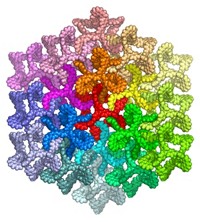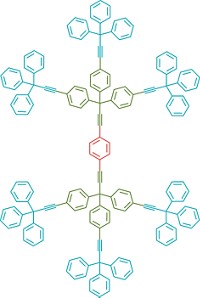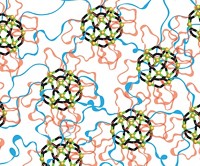Advertisement
Grab your lab coat. Let's get started
Welcome!
Welcome!
Create an account below to get 6 C&EN articles per month, receive newsletters and more - all free.
It seems this is your first time logging in online. Please enter the following information to continue.
As an ACS member you automatically get access to this site. All we need is few more details to create your reading experience.
Not you? Sign in with a different account.
Not you? Sign in with a different account.
ERROR 1
ERROR 1
ERROR 2
ERROR 2
ERROR 2
ERROR 2
ERROR 2
Password and Confirm password must match.
If you have an ACS member number, please enter it here so we can link this account to your membership. (optional)
ERROR 2
ACS values your privacy. By submitting your information, you are gaining access to C&EN and subscribing to our weekly newsletter. We use the information you provide to make your reading experience better, and we will never sell your data to third party members.
Materials
Material’s rotors spin freely and quickly
Metal-organic framework with rotating groups may play role in future molecular machines
by Stu Borman
January 1, 2018
| A version of this story appeared in
Volume 96, Issue 1

Researchers have designed a crystalline material with tethered but freely spinning molecular groups that rotate incredibly quickly for a solid-state material. The material is the best example yet of an “amphidynamic material,” a crystalline solid with both relatively static and rapidly moving molecular units. Miguel García-Garibay of the University of California, Los Angeles, and coworkers synthesized the material by combining a Zn4O-based metal-organic framework with spinning bicyclo[2.2.2]octane-1,4-dicarboxylate units that have nearly zero spatial or electronic barriers to rotation (Proc. Natl. Acad. Sci. USA 2017, DOI: 10.1073/pnas.1708817115). The bicyclooctane units spin at up to 50 billion rotations per second, only one order of magnitude slower than the maximum possible rotation rate for unhindered gas-phase molecular rotors in vacuum. At the same time, the Zn4O framework undergoes normal low-frequency vibrations. In previous amphidynamic crystals, rotors had larger internal steric or electronic barriers that caused them to rotate in discrete steps. The new material’s low barriers enable the bicyclooctane groups to rotate continuously instead, and the rotors also switch direction many times a second. Amphidynamic materials like this new one have potential implications for the design of smart materials and molecular machines, the researchers say.





Join the conversation
Contact the reporter
Submit a Letter to the Editor for publication
Engage with us on Twitter